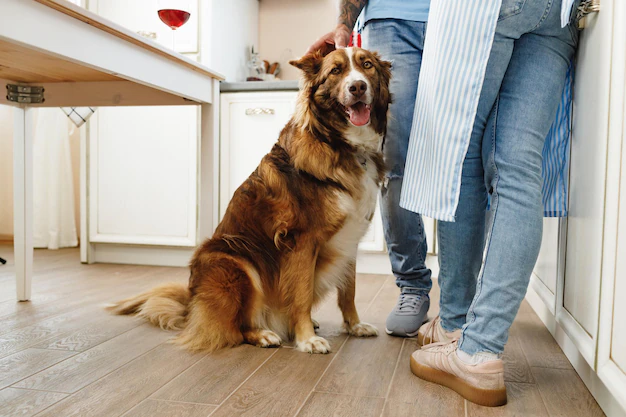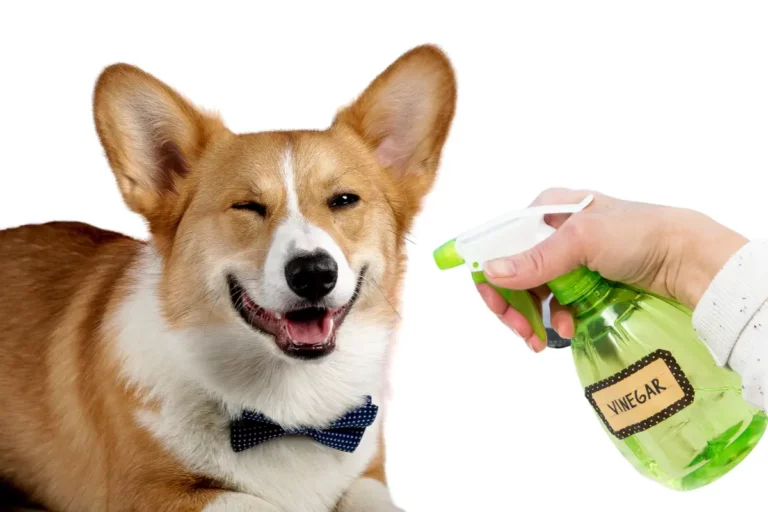Why Does My Dog Hump Blankets? (8 Reasons & How To Stop It)
Dog humping, also known as mounting, is a behavior that many pet owners have witnessed in their canine companions. While it can be a source of amusement or embarrassment, it’s important to remember that humping is a natural behavior for dogs. However, when it comes to humping inanimate objects like blankets, it might leave pet owners puzzled.
Blankets, in particular, seem to be a common target for dogs when they display this humping behavior.
So, why do dogs hump blankets?
Dogs can hump blankets for several reasons which include; excitement, stress, and boredom, probably because they lack enough exercise to vent their excess energy. Humping is also one of the ways dogs express their dominance. Perhaps, by humping on the blanket or other objects, your dog is trying to inform you or other canines that he is in charge of that territory. Furthermore, this hump-loving behavior could also be sexually motivated.
While this isn’t always the case, dog humping may sometimes be sexual, especially for dogs that haven’t been spayed (removing their sexual organs so they do not procreate). Sometimes, it may be a gesture with which they show their excitement about something.
This blog post aims to explore the reasons behind this specific behavior, providing insights into why dogs choose to hump blankets.
Gaining a better understanding of why dogs hump blankets can help pet owners identify if their dog’s behavior is normal or if it could be an indication of an underlying issue. By examining the causes and learning how to manage this behavior, pet owners can build a stronger, more informed bond with their furry friends.
Key takeaways
Blanket humping can be a sign of dominance, excitement, or stress.
It can be a learned behavior for attention-seeking.
For unneutered dogs, it may be a sign of sexual behavior.
In some cases, it might indicate underlying health issues.
Positive reinforcement training can help reduce this behavior.
The Science Behind Dog Humping
Hormones and natural instincts
Humping behavior in dogs is influenced by hormonal factors and natural instincts. Male dogs produce testosterone, which can contribute to their urge to hump. However, it’s important to note that even female dogs can exhibit this behavior due to their hormones and instincts.
Table could not be displayed.Role of Sexual and Social Maturity
The age and maturity of a dog play a significant role in humping behavior. Puppies may start humping as early as a few months old, while some dogs may not exhibit this behavior until they reach social and sexual maturity.
It is crucial to recognize that humping behavior in dogs may not be solely related to mating, but it can also be part of social development and interaction with other dogs or objects.
Dominance, submission, and social structure
Dogs are social animals with a hierarchical structure, which means that humping behavior can be connected to establishing dominance or submission within a group. While humping can be a way for a dog to assert its dominance, it can also be a display of submission or an attempt to appease a more dominant dog.
In the case of humping blankets, the behavior may be an expression of a dog’s need to establish its place within the social order, even if there are no other dogs present.
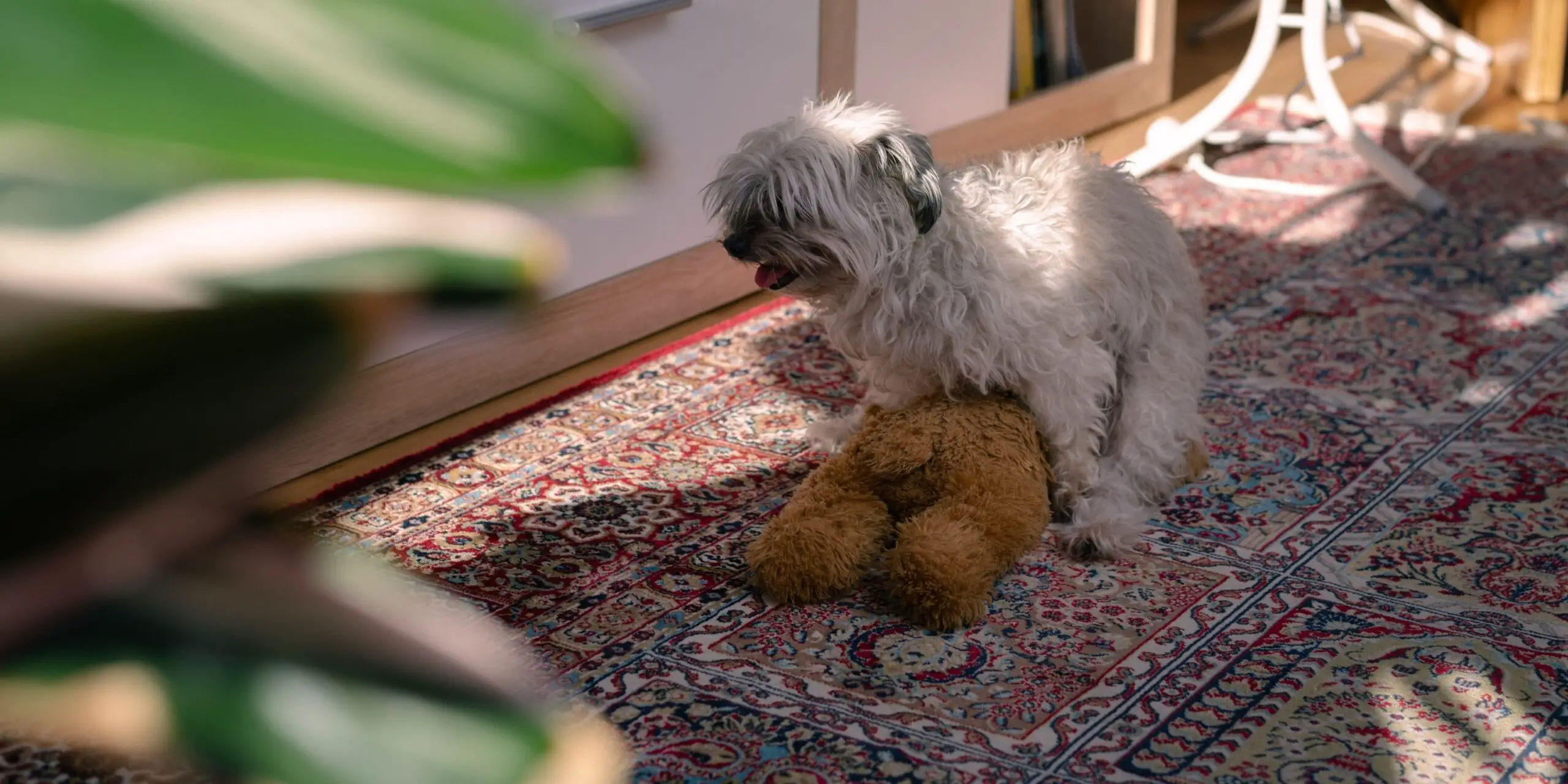
Why Does My Dog Hump Blankets? (8 Reasons Explained)
What is my dog thinking?
This behavior isn’t always sexual. It could be a display of dominance, a response to stress, or simply an effort to get your attention.
1. Sexual behavior
Mating Instinct
Dogs have natural mating instincts, which can lead them to hump objects like blankets. While this behavior is more common in intact male dogs, it can also be observed in female dogs and neutered males. Humping a blanket might serve as an outlet for a dog’s mating instincts, especially when there are no other suitable targets available.
Sexual frustration
In some cases, dogs may hump blankets as an expression of sexual frustration. This can happen when a dog doesn’t have the opportunity to mate, is exposed to the scent of a dog in heat, or when they are simply not given enough outlets for their energy and natural instincts.
Sexual Stimulation
Although dog-humping may not necessarily translate to sexual arousal, your pooch may hump blankets when they are aroused. In fact, a previous dog I had used to do this regularly with a teddy bear.
Dogs hump anything when they are physiologically or psychologically stimulated to mate with other dogs.
If it is a female dog, it usually means that her hormones are on overdrive and may signal that she is in heat.
2. Play and excitement
Humping behavior can be a sign of playfulness and excitement in dogs. Just as they might jump, bark, or wag their tails when they’re excited, some dogs might also hump blankets as a way to express their enthusiasm or happiness.
No products found.
3. Stress relief or self-soothing
Dogs may resort to humping blankets as a means to relieve stress or soothe themselves. In this case, humping can be a self-soothing mechanism that helps dogs cope with anxiety, fear, or frustration. Blankets may be a preferred target for this behavior because they are soft, comforting, and often carry their owner’s scent.
4. Time to Pee or Poop
If your pup starts to hump the blanket suddenly, it may be a way to communicate that they are pressed and need to potty.
Since mounting requires the dog to place their forelimbs on other stuff and thrust their pelvis repeatedly, it may well be indicative of the fact that the organs in the area need to be relaxed or emptied of their contents.
Humping a blanket as a sign to go potty may be learned behavior dogs pick up by self-discovery or from other dogs.
5. Medical Issues
Allergies
Humping behavior might also be a result of medical issues like allergies. Dogs suffering from allergies can experience itching and discomfort in their genital areas, which can cause them to hump blankets in an attempt to alleviate the irritation.
Urinary tract infections
Urinary tract infections (UTIs) in dogs can lead to discomfort and increased genital sensitivity. As a result, dogs may hump blankets to find relief from their symptoms.
This means your dog may have become sick with urinary tract infections (UTIs), a rash, or a skin allergy. Your dog might also have trouble urinating.
If the blanket-humping is done with licking around the genitals, it is probably time to take your doggie to see a vet.
6. Learned Behavior
When dogs, even girl dogs, and neutered dogs, start to hump things around, they may have incorporated a bad habit. It may be that they may have been influenced by watching other dogs around hump things and have gradually learned the act.
This bad behavior needs to be corrected as soon as possible so the humping does not become compulsive or excessive. It’s usually embarrassing when your dog mounts the blanket at every slightest opportunity, and the fishy thing in the situation may be just bad dog behavior.
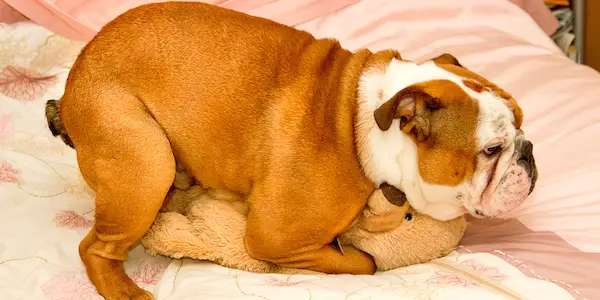
7. Boredom
A lack of physical exercise and mental stimulation can lead to boredom in dogs. Humping blankets might be a way for dogs to entertain themselves when they don’t have enough activities to keep them engaged.
Dogs can be very energetic and playful animals. They often don’t like to be confined to small spaces, (they are perhaps claustrophobic) and do not like to be idle.
Some dog breeds may become aggressive or begin acting up when they are bored. Part of the act would be to hump stuff, blankets, pillows, and human legs.
Pet parents should be able to notice this and let their dog do something exciting like exercise or training. Throw a toy or ball around and let the little doggy try to find it.
8. Attention-seeking
Dogs may hump blankets to get their owner’s attention. If they have learned that humping elicits a reaction from their human, they may continue the behavior as a means of gaining attention or initiating interaction.
How to Manage and Redirect Your Dog’s Humping Behavior
Neutering or spaying your dog
One of the first steps to managing your dog’s humping behavior is to consider neutering or spaying. This can help reduce the hormonal influence on the behavior, especially if it’s driven by mating instincts.
While neutering or spaying doesn’t guarantee the complete cessation of humping, it may significantly reduce the frequency and intensity of the behavior.
Training and behavior modification
Implementing consistent training and behavior modification techniques can help manage and redirect your dog’s humping behavior. When your dog starts humping a blanket, redirect their attention to an appropriate activity, such as playing with a toy or practicing obedience commands.
Reinforce positive behavior with praise and treats while discouraging humping without resorting to punishment or negative reinforcement.
Socialization and playtime
Ensuring that your dog has plenty of opportunities for socialization and play can help curb humping behavior. Regular interaction with other dogs can help your canine companion develop healthy social skills and establish appropriate outlets for their energy and natural instincts.
Mental and physical stimulation
Providing your dog with ample mental and physical stimulation is crucial to preventing boredom and reducing humping behavior. Engage your dog in interactive games, obedience training, and daily walks or runs to keep their mind and body occupied.
Identifying and addressing underlying issues
If your dog’s humping behavior is related to stress, anxiety, or medical issues, it’s essential to address these underlying problems. Consult with a veterinarian or a certified professional dog trainer to determine the best course of action for your dog’s specific situation.
Should I Let My Dogs Hump Blankets?
Because humping is not often sexual arousal or dog masturbation, it may indicate a generally excited or happy dog. When your pooch is excited, he may want something to hump like a toy or slippers. Or he may want to get the attention of his master by humping his legs.
It is a healthy activity and won’t be short of goodness to let your dog play with his favorite humping toy every once in a while, or perhaps after a great training session. It could be a form of reward for a job well done.
A dog toy is preferable to a blanket, even though a blanket wouldn’t be extreme. But when the dog always prefers the blanket, it might raise your eyebrows.
Table could not be displayed.When to Seek Professional Help
Persistent or excessive humping: If your dog’s humping behavior becomes persistent or excessive despite your attempts to manage and redirect it, it may be time to seek professional help.
A certified professional dog trainer or a veterinary behaviorist can provide guidance on effective techniques and strategies tailored to your dog’s unique needs.
Signs of medical problems: In some cases, humping behavior may be indicative of an underlying medical issue. If your dog displays signs of discomfort, pain, or unusual behavior alongside humping, consult with your veterinarian to determine the cause and appropriate treatment.
Aggression or other behavioral concerns: If your dog’s humping behavior is accompanied by aggression, destructive behaviors, or other concerning behavioral issues, it’s crucial to seek professional help.
A certified professional dog trainer, veterinary behaviorist, or veterinarian can provide support in addressing these problems and ensuring a healthy and happy relationship with your dog.
Frequently Asked Questions
Why Does My Dog Suck and Hump Blankets?
Just like a baby sucking on their thumb or pacifier when they are stressed, pups suck on blankets because they have been deprived of emotional support by their canine mothers, especially when the latter are trying to wean their cubs.
If your doggy loves to suck on his favorite blankie and hump, it could be because they are anxious or emotionally wanting and need to be put at ease. A good distraction would be enough to dissuade the behavior.
Why Do Dogs Knead Blankets?
Dogs knead their blankets to prepare themselves for sleep. It is usually seen as a cute and happy-go-lucky behavior by pet lovers. They may also knead the blankets to instinctively rub off their scents on them and make the blankets more in tune with their system.
Or they may want to increase the surface area for cooling because they do not have sweat glands.
Why Does My Girl Dog Hump My Blankets? Are Female Dogs Supposed to Hump Things?
Since, according to ASPCA, humping is not a behavior specific to the canine gender, it is normal for your girl dog to hump blankets and other stuff. Girl dogs may hump blankets because they are happy or excited about something.
They may hump their pet parents because they want to get their attention. They may hump other dogs because they want to play or be friends. But most importantly, girl dogs hump to show it’s mating o’clock.
Why Does My Dog Hump His Blanket Every Night?
A very likely reason why your dog might become over-excited at night and hump blankets would be that he didn’t get enough exercise — mental and physical stimulation, during the daytime.
You might also want to look closely into his diet and examine his health, to fix anything that may make him restless or hyper at night.
Why Does My Dog Hump Pillows?
When your dog humps pillows, it’s basically a way of communicating the excitement and their need to play or just an activity that they enjoy. Other reasons for this humping behavior include boredom, anxiety, stress, and health conditions that result in itchy or painful genitalia.
Though surprisingly rare, sexual arousal can also prompt this behavior and it is more common in unneutered dogs particularly when they experience a rise in their hormonal levels.
Final Thoughts
Understanding the reasons behind your dog’s humping behavior is essential to ensure their well-being and maintain a healthy relationship with your canine companion.
Whether it’s driven by natural instincts, playfulness, stress relief, or medical issues, it’s important to address the root cause of the behavior and provide appropriate guidance and support.
With patience, consistent training, and, if needed, professional assistance, you can manage your dog’s humping habits and create a comfortable, happy environment for both you and your furry friend.
Keep in mind that every dog is unique, and finding the right approach to address their behavior will strengthen the bond between you and your pet, ensuring a loving and fulfilling partnership for years to come.

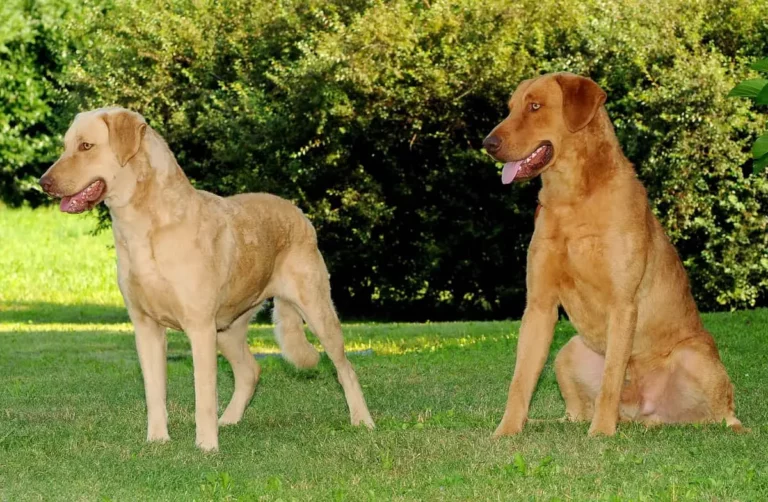
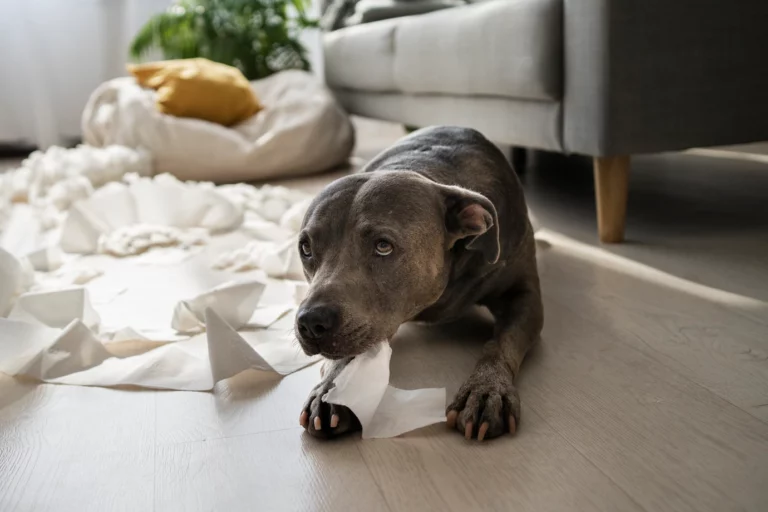
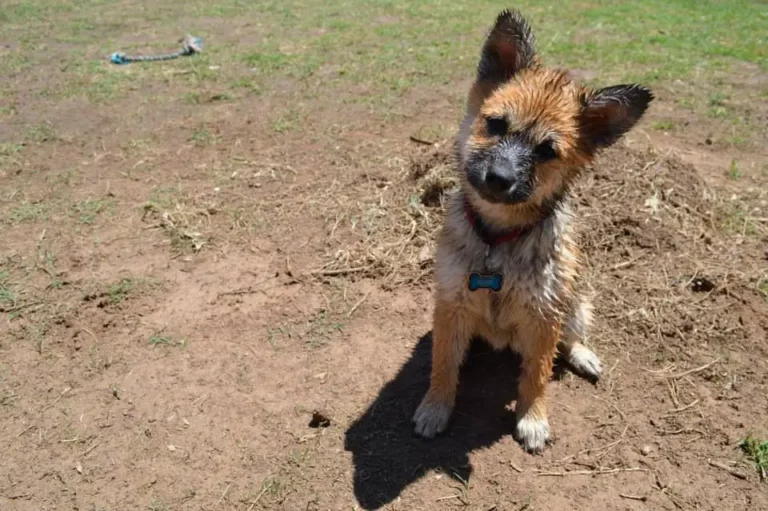
![Why is My Dog Panting at Night? [4 Reasons]](https://www.warmlypet.com/wp-content/uploads/2022/12/why-is-my-dog-panting-at-night-768x513.webp)
